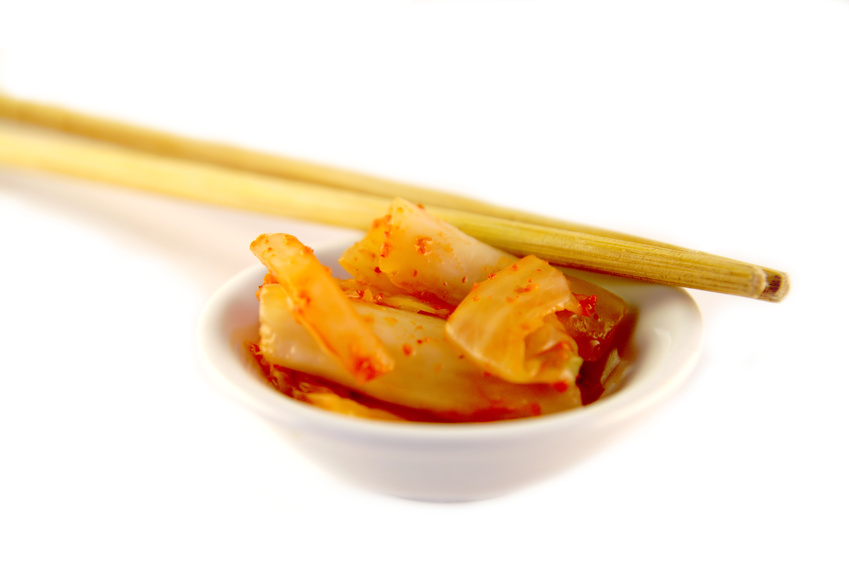By Richard Sterling
|
|
Recipe
Kimchi |
It is the stuff of ancient legend, and even of poetry. Songs are sung of it, odes penned, memories and meals made complete by it. Unless you dine only in fast food restaurants and hotel coffee shops it will be your most enduring gustatory memory of Korea. Kimchi is the great culinary constant of Korean daily life, that sine qua non without which the domestic culture would find itself bereft. It is often called Korean sauerkraut. And pickled cabbage it may be, but it is sauerkraut raised to the Nth degree, in a process that imbues the humble cabbage with the last possible iota of gastronomic pleasure. Mere leaves are elevated to seductive and sensual delight, to the ultimate Korean comfort food. And it is not only a side dish for Koreans, it is almost a cult. They simply cannot have a proper meal without it. But it isn’t merely a recipe, it’s a concept. It’s not unlike pizza or minestrone in that regard. It’s not a thing, but a way of doing a thing.
In simplest terms, kimchi is cabbage cured in brine then pickled with spices. The spices can be almost anything the kimchi maker desires. Common among them are garlic, cardomom, cloves, ginger, scallions. But the one that every kimchi simply must have is red pepper. And lots of it. This can be positively incendiary stuff. So if you like a good four-alarm chile, you’re going to be in Hot Mouth Heaven when in Korea. But if the zing and sting of the pungent pod are not quite your cup of tea, don’t despair. There is no need to eat this stuff straight. Indeed, it is usually taken in small bites along with rice and other foods, its chief purpose being to perk up something otherwise bland, and to cleanse the palate of fats and starch. Then again, there are those who eat it straight out of the jar.
The word kimchi means “sunken vegetable.” This is taken from the practice of sinking cabbage or other vegetables in brine in order to start the pickling process. Korean winters are long and harsh. Survival has always required a bountiful supply of preserved foods. After simple drying and salting, pickling is the most ancient method of preserving food. The process relies on a good microbe to convert sugars into lactic acid. This particular bug’s name is lactobacillus. As the population of lactobacilli grows, it feeds on the natural sugars in the plant juices and produces lactic acid as its waste product. The more they consume, the more lactic acid they release. And it is this highly acidic environment that prevents the growth of other bad microbes that would otherwise eat the plant juices and cause decay.





